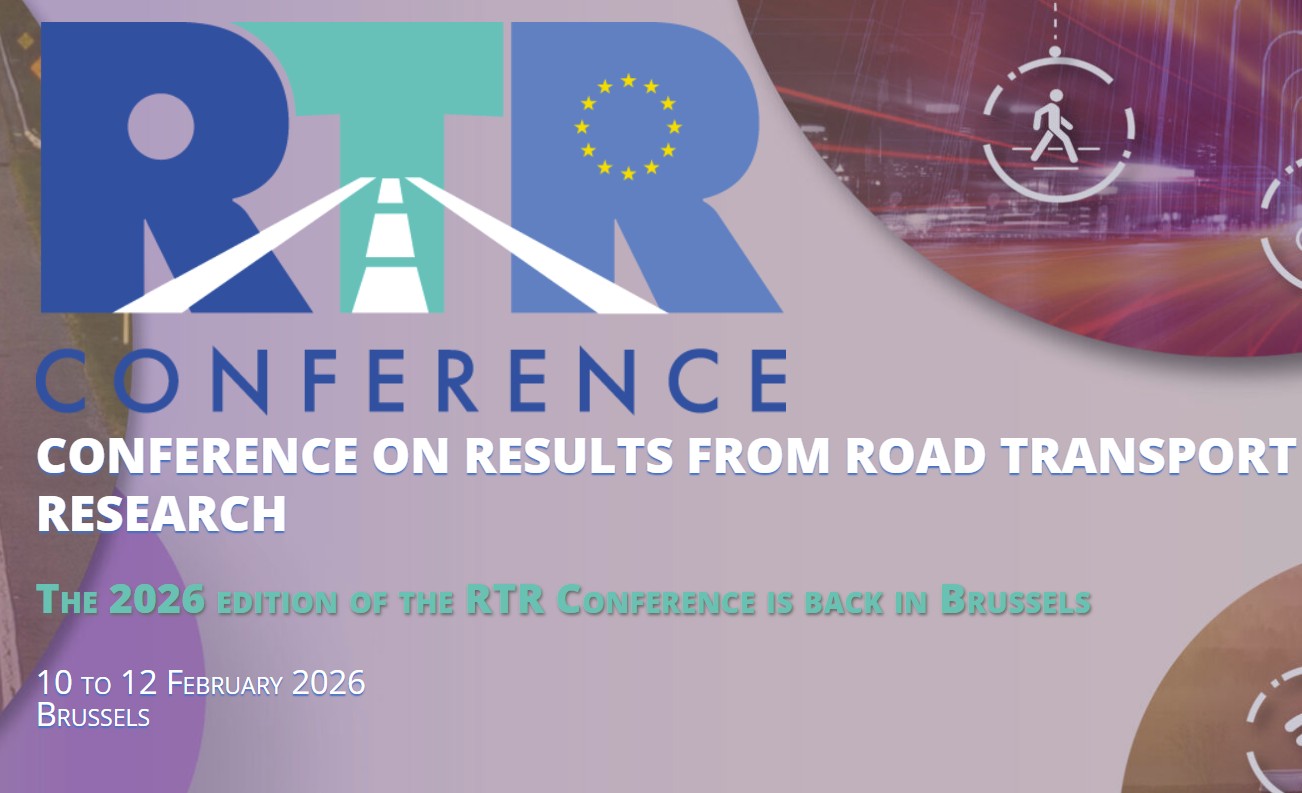Author: agouma

The Horizon 2020 research project SHOW project (SHared automation Operating models for Worldwide adoption) organised with great success the 3rd Pan-European Workshop, titled “Including a technical visit to the automated bus pilot at EMT bus depot”, which was held in Madrid, on 19 October 2022. The workshop started with a series of speeches from high-level representatives from EMT, the city of Madrid and the European Commission, followed by a deeper look into SHOW insights from the real-life demonstrations that have started in numerous cities in Europe. 
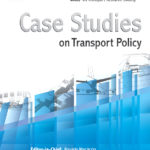
A paper titled “Evaluating Good Practices for the promotion of Electromobility using Mul-ti Criteria Analysis Methods” authored by Athanasios Zirganos, Foteini Orfanou, Eleni I. Vlahogianni and George Yannis, is published in Case Studies on Transport Policy. For the purpose of this work , 20 Good Practices implemented in 9 European Regions aiming at diffusing electromobility were selected for applying the proposed methodology. The results showed that practices offering significant environmental benefits and improved energy systems, received higher scores than those contributing in raising public awareness or proving an advantage of electric vehicles over the conventional ones. 
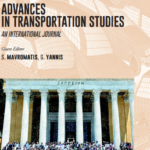
A paper titled “Risk factors linked with elderly, truck and office worker drivers: a literature review in light of automated driving” authored by Marios Sekadakis, Christos Katrakazas, Peter Mörtl, Erika Santuccio and George Yannis, has been published in Advances in Transportation Studies. This study tries to identify and review risk factors that impact road safety and driving performance focusing more on three types of users, namely elderly drivers, truck operators, and office workers. The literature review was conducted using popular databases such as Google Scholar, Science Direct, and Scopus using specific search terms and prioritization criteria for studies coming mainly from Europe and the U.S, and after 2005. The aforementioned review will be exploited by the HADRIAN project, like any other HMI stakeholder, in order to develop a human-centered assessment methodology that will evaluate the way the human interacts with potential HMI configurations. Finally, the reviewed risk factors could guide stakeholders in accomplishing a safer transition from manual to autonomous driving for all road users. 
Investigation of traffic and safety behavior of pedestrians while talking on mobile phone, June 2022

A paper titled “Investigation of traffic and safety behavior of pedestrians while talking on mobile phone” authored by Dimitra Typa, Dimitris Nikolaou and George Yannis, has been published in Advances in Transportation Studies. This study aims to investigate how hand-held cell phone conversation affects the behavior of pedestrians at signalized intersections in terms of both safety and traffic. In order to compare the behavior of distracted and non-distracted pedestrians, an outdoor environment experiment was carried out in real road conditions. Various demographic and behavioral characteristics were recorded, including mobile phone use. Initially, multiple linear regression models were developed in order to identify how cell phone use affects pedestrians’ speed. The results of the developed statistical models showed that pedestrians’ main traffic and safety characteristics were negatively impacted by distraction from hand-held cell phone conversation, as mobile phone use not only reduces pedestrians’ speed but also increases the likelihood that they will be involved in a collision with an approaching vehicle. 
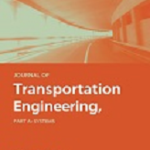
A paper titled “Driving Behaviour and its correlation with COVID-19 response measures: A neural network forecasting analysis” authored by Marios Sekadakis, Christos Katrakazas, Eva Michelaraki and George Yannis, is published in Journal of Transportation Engineering. The NNAR modeling results showed that with higher stringency index, mobile use and driving speed tend to increase, whereas speeding duration demonstrates higher peaks. Interestingly, with stricter response measures, lower values were forecasted for speeding. According to the modeling outcomes, there is a direct effect of the COVID-19 response measures on driving behavior. 

A paper titled “A state-of-practice Review on Crash Occurrence Analysis and Hazardous Location Identification” authored by Paola Tiberi, Antonino Tripodi, Anastasios Dragomanovits, Katerina Deliali and George Yannis, has been published in Advances in Transportation Studies. This study provided a state-of-practice review of the international literature on methods and applied practices for the identification of hazardous locations based on crash occurrence analysis. The analysis identified and summarized differences and similarities in the various methods and applied practices. Overall, this review is useful for practitioners so that they can identify potential ways of improving their applied crash occurrence methodology, while it will also inform researchers on paths for future research in the field of crash and safety analysis. 
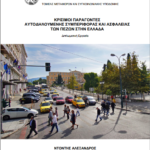
An NTUA Diploma Thesis called “Critical factors of pedestrians self-declared behaviour and safety in Greece” was recently presented by Alexandros Ntontis. For the purpose of this Diploma Thesis, two binary logistic regression models and a Structural Equation Model (SEM) were developed, using data from the second edition of the ESRA survey. The results showed that a pedestrian who will engage more frequently in crossing the road with red pedestrian light is more likely to also engage in crossing the road at places other than at a nearby pedestrian crossing. 

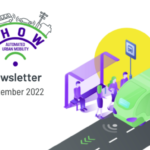
The Horizon 2020 research project SHOW (SHared automation Operating models for Worldwide adoption) has recently released the SHOW 5th Newsletter. The Newsletter provides information on the latest outcomes of the project. Beyond technical developments, additional pilot sites have kicked off their real-life operations and will start collecting feedback from the project’s local teams and from the citizens using it’s services. 
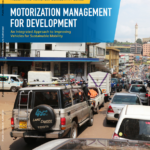
The World Bank Global Road Safety Facility (GRSF) has published a Knowledge Report titled Motorization Management for Development: An Integrated Approach to Improving Vehicles for Sustainable Mobility. This Report presents the World Bank’s Motorization Management (MM) framework, which is intended to support client countries in the development of policies and measures aimed at managing vehicle stocks in a proactive, phased, and systematic manner to make them safer, cleaner, and more fuel efficient. The MM framework reflects a series of policy considerations and programs that can be implemented to improve the quality of fuels and vehicles in a country’s stock. 

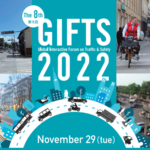
The International Association of Traffic and Safety Sciences (IATSS) organised with great success the 8th GIFTS Symposium, which was held as a hybrid event (in Tokyo and online), on 29 November 2022. In this 8th forum, experts in transportation and safety as well as specialists from international organizations, had the opportunity to exchange opinions and discuss about the ideal traffic society and urban planning from the perspective of the “positive benefits”. 
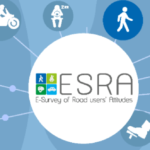
The Final Synthesis Report of the European Survey of Road Users’ Safety Attitudes (ESRA) has been published with the active contribution of NTUA, containing a wealth of information on road safety in 48 countries, based on the ESRA2 survey. The results of the survey were published through a series of Reports: 15 Thematic Reports on road safety topics, the Country Fact Sheets and the 2022 Main Report. 

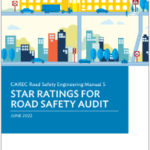
CAREC and the Asian Development Bank (ADB) have recently co-published a Road Safety Engineering Manual titled “Star Ratings for Road Safety Audit“. This system, Star Ratings for Road Safety Audits, will help policy makers and practitioners involved in designing, upgrading, and rehabilitating roads to meet safety targets and reduce injuries from traffic accidents. 

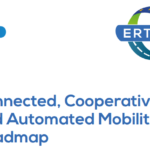
The European Road Transport Research Advisory Council (ERTRAC) published the Connected, Cooperative and Automated Mobility Roadmap, as part of the ERTRAC Roadmaps. According to the Report, in 2050, vehicles will have 100% real-time connectivity on the relevant road network and the transport management system will have the appropriate quality of service level, also for remote operation. All newly registered vehicles will have automation but in different levels. 

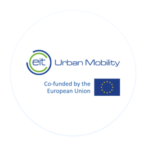
EIT Urban Mobility organised with great success the Tomorrow Mobility World Congress, which was held in Barcelona and online, on 15-17 November 2022. The event lasted three days, featuring ongoing conversations with international experts, and was a place to learn about the challenges and solutions of urban mobility. 
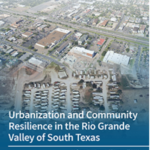
A paper titled “Public Acceptability of Environmentally Linked Congestion and Parking Charging Policies in Greek Urban Centers” authored by Virginia Petraki, Panagiotis Papantoniou, Asimina Korentzelou and George Yannis, is published in Sustainability. A structural equation model (SEM) was developed using data from a questionnaire survey which provided a sample encompassing 733 respondent drivers from three main urban centers of Greece: Athens, Thessaloniki and Volos. Several statistical relationships were detected and quantified correlating the two examined urban environmental charging policies with five latent unobserved variables. Based on the results, public acceptability of environmental congestion charging policies and the public acceptability of environmental parking charging policies were found to be positively correlated with each other, meaning that a driver who supports one environmentally linked transport charging policy is more likely to support the other one as well. 
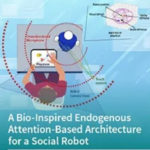
A paper titled “Data-driven estimation of a driving safety tolerance zone using imbalanced machine learning” authored by Thodoris Garefalakis, Christos Katrakazas and George Yannis, has been published in Sensors. This paper proposes a framework to identify the level of risky driving behavior as well as the duration of the time spent in each risk level by private car drivers. The results showed that Random Forests and Multilayer Perceptron (MLP) outperformed the rest of the classifiers with 84% and 82% overall accuracy, respectively, and that the maximum speed of the vehicle during a 30-second interval, is the most crucial predictor for identifying the driving time at each safety level. 

European Commission organised with great success the European Research and Innovation Days annual event, that was held online on 28 and 29 September 2022. This is the European Commission’s annual flagship Research and Innovation event, bringing together policymakers, researchers, entrepreneurs and the public to debate and shape the future of research and innovation in Europe and beyond. This year’s event provided the opportunity to discuss and shape new solutions to strengthen Europe’s resilience and its strategic autonomy. 
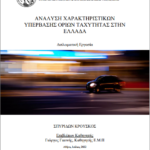
An NTUA Diploma Thesis titled “Analysis of speeding characteristics in Greece” was recently presented by Spyridon Krouskos. The data used for the statistical analysis were collected in the period of November-December of 2021 in Greece, and were related to vehicle speed measurements, but also to the simultaneous recording of the type of vehicle, the type of road, the weather conditions and the time period. The results showed that motorcycle drivers are more likely to exceed the speed limit than passenger car drivers, while it was estimated that the opposite is true for the other types of vehicles. It was also found that drivers on urban roads are more likely to exceed speed limits than drivers on motorways. 

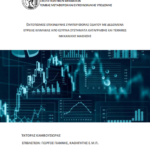
A NTUA Diploma Thesis titled “Detection of dangerous driver behavior with widescale data from smart recording systems and machine learning techniques” was recently presented by Hector Kamvoussioras. For the purpose of this Diploma Thesis, data were collected through a simulator experiment in order to classify and predict driving behaviour. Ridge classifier, Support Vector Machine, Random Forest and XGBoost models were developed. It was revealed that Random Forests and XGBoost models showed the most reliable results in the prediction ability, with 95% accuracy of the three driver categories (i.e. normal, dangerous, avoidable accident). Speed, headway and hands on the wheel found to be the most important variables to predict crash risk. 

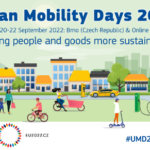
The Urban Mobility Days Conference 2022, co-organised by the European Commission, Directorate-General for Mobility & Transport (DG MOVE) and the Czech Presidency of the Council of the EU was held with great success in the city of Brno (Czech Republic) on 20-22 September 2022. Urban Mobility Days provides a unique forum for policymakers, local authorities, academics, NGOs, urban transport practitioners, and urban planners to connect and discuss the way forward for a sustainable, innovative, and equitable future for Europe’s urban mobility. This year’s theme was “Moving people and goods more sustainably”. 
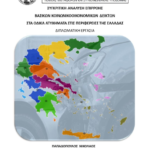
An NTUA Diploma Thesis titled “Comparative analysis of socioeconomic indicators on road safety in the Greek Regions” was recently presented by Nikolaos Papadopoulos. A cluster analysis was performed leading to four clusters: Islands, Western & Southern mainland Greece, Northern mainland Greece and Attica. The results depicted the different geographical characteristics, economic level, mobility patterns and road behaviors of the regions, which are also reflected in road safety outcomes. 

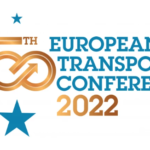
The Association for European Transport organised with great success the 50th European Transport Conference which was held in Madrid, on 7-9 September 2022. The conference took as its main theme: “Behavior Change-the impacts of the climate emergency and COVID-19 on long term travel patterns” and focused on the future and how transport planning can respond to the challenges of climate change and of life post-Covid. 
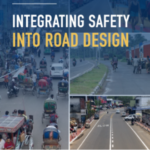
The World Bank Global Road Safety Facility (GRSF) has published a Report titled “Integrating Safety into Road Design”. This Guide has been produced in response to the ever-growing need for safe road and roadside design to save lives from road crashes. The Guide focuses on elements of safe road and roadside designs for road networks that can provide safe mobility to all road users, as well as complementary changes to improve speeds, vehicle safety, road user behaviors, and post-crash care. 

The LEVITATE Policy Support Tool (PST) is publicly available as developed within EU Horizons 2020 research project LEVITATE with the active contribution of NTUA. The LEVITATE PST is the go-to, one-stop-shop to support decisions on Cooperative, Connected and Automated Mobility (CCAM) related interventions. It is designed as an open access, web-based system that provides interested users with access to LEVITATE methodologies and results. It contains Forecasting, Backcasting and CBA estimator capabilities as well as a rich Knowledge module serving as background and scientific repository supporting the ensemble of quantitative and qualitative estimates produced from the PST. 

The related NTUA presentation was titled LEVITATE – Policy Support Tool ![]()
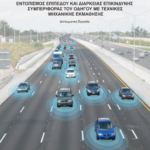
An NTUA Diploma Thesis called “Identification of driver’s risky behavior level and duration with machine learning techniques” was recently presented by Theodoros Garefalakis. For the purpose of this Diploma Thesis, high resolution data related to driving behavior were collected through a driving simulator experiment. In the first part of the analysis, four machine learning algorithms were developed to classify driver behavior into one of three risk levels, with the ‘Random Forests’ algorithm scoring the highest performance. In the context of investigating the influence of driving factors to identify driving behavior, the distance traveled, speed and speed limit emerged as the most important. In the second part of the analysis, the effect of driving characteristics on driving duration at different stages was examined through three regression algorithms. The results showed that the maximum speed was the most important variable, which negatively affects the driving duration at each safety level. 

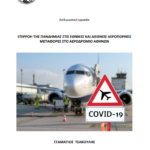
An NTUA Diploma Thesis called “Impact of Pandemic on National and International Air Transport Demand at Athens International Airport” was recently presented by Stamatios Tsakoulis. This Diploma Thesis investigated the factors of the pandemic that influenced the air transport demand at Athens Airport and revealed that the rate of vaccination coverage of the population is the most critical variable of recovery of air traffic while the severity of the lockdown is an important inhibitory factor. In addition to that, low-cost airlines showed the highest correlation with air traffic, while airlines with chartered flights in countries with temporary traffic had a significant influence. 

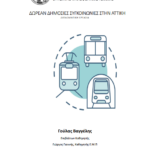
An NTUA Diploma Thesis called “Free Public Transport in Attica Region” was recently presented by Vaggelis Goulas. This Diploma Thesis revealed that the possibility of changing means of free public transport depends largely on the cost, time, comfort, beliefs, transportation characteristics and demographic characteristics of the respondents. The faster and more comfortable the journey, regardless of cost reduction, the more likely it is to opt for free public transport instead of staying in the existing means of transport. 

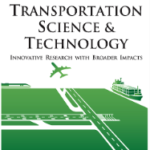
A paper titled “Impact of texting and web surfing on driving behavior and safety in rural roads” authored by Marios Sekadakis, Foteini Orfanou, Dimosthenis Pavlou, Maria Oikonomou, Christos Katrakazas and George Yannis, is published in International Journal of Transportation Science and Technology. For the purpose of the study, driving data were gathered through a driving simulator experiment with 37 young drivers. Additionally, a survey was conducted to collect their demographic characteristics and driving behavior preferences. During the experiment, the drivers were distracted using contemporary smartphone internet applications i.e., Facebook Messenger, Facebook and Google Maps. In the end, the results showed that driving behavior and safety among young drivers were both significantly affected by the investigated internet applications. 
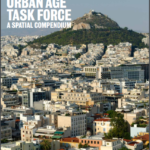
The London School of Economics and Political Science (LSE), the Alfred Herrhausen Gesellschaft (AHG) and the City of Athens co-organised with great success the Athens Urban Age Forum that was held in Athens on 16 June 2022. The Forum brought together experts from Milan, London, Paris, Barcelona and Vienna with their counterparts in the City of Athens, to discuss how European cities can transform their urban environment and improve liveability through investments in the public realm, parks and open spaces, sustainable mobility and equitable planning.  NTUA actively contributed with the following presentation :
NTUA actively contributed with the following presentation :
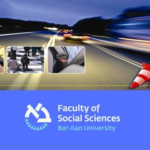
The Research Institute of Human Factors in Road Safety together with Faculty of Social Sciences at Bar Ilan Center University co-organised with great success the 30th Annual Conference of Road Safety, which took place online on 28 July 2022. Thirteen Israeli lecturers and six lecturers from US, UK, Australia, Germany, Greece and Italy presented their original research on this international scientific conference.  NTUA actively contributed with the following presentation :
NTUA actively contributed with the following presentation :


































































































































































